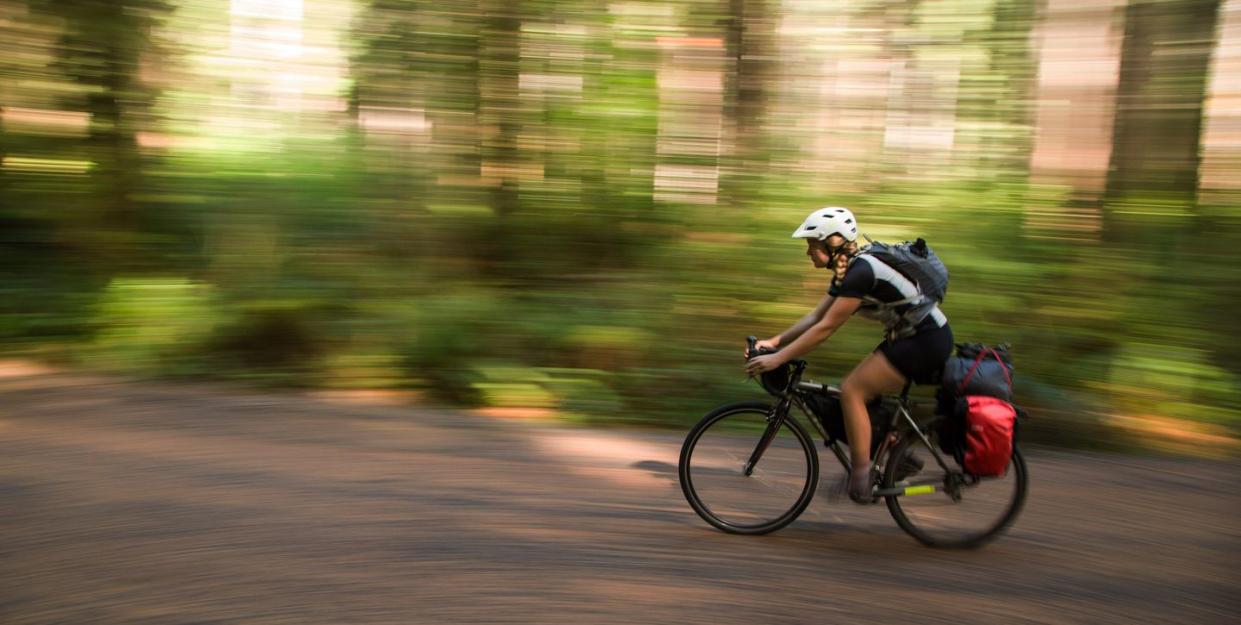Diagnosed With Juvenile Arthritis at 13, This Cyclist Is Thriving

Zoe Zeerip was 13 years old when she was diagnosed with juvenile idiopathic arthritis, an illness that abruptly and painfully entered her life with no explanation. The debilitating symptoms left her in constant discomfort at best and bedridden at worst, until she was finally diagnosed and received proper treatment. Now, ten years later—watching her mountain bike, snowboard, and more—you have no idea she even has a chronic illness.
Juvenile idiopathic arthritis, also called juvenile rheumatoid arthritis, causes inflammation, swollen joints, pain, and sometimes even more severe symptoms like glaucoma and blindness. When it occurs in those under the age of 16, it receives a “juvenile” label, while “idiopathic” refers to the fact that there’s no known cause. Simply put, a person’s immune system attacks its own body.
Zeerip began having pain when she was 12 years old. She had always been athletic, trying all kinds of sports from a very young age, but suddenly, being active became difficult. She wore braces on both of her wrists, and her coaches would tape up her ankles before each practice. She attempted physical therapy as a way to alleviate the pain, and at times, she needed crutches to help her walk.
Doctors opted to perform an exploratory surgery to see if they could determine the reason for her pain. That ended up making her symptoms worse—and she spent most of the next five months laying on the couch with inflammation throughout her body and a constant ache before being properly diagnosed.
“It was quite a roller-coaster ride for me,” Zeerip told Bicycling. “For the most part, I just felt like an old person in a really young body.”
Nowadays, she still experiences symptoms, but they’re largely kept under control with medication. The pain and inflammation tend to manifest in her fingers, wrists, and ankles, though sometimes someplace new will flare up. Zeerip injects a biologic shot twice a week into her stomach, and she also receives cortisone shots when the pain becomes too much to manage—thought she can’t receive those often, or they’ll lose their effectiveness. Consequently, Zeerip says it’s a matter of deciding whether to deal with the pain or not.
“It’s pretty fascinating how one day I can put rings on [my fingers] and the next day I can’t,” she said.
With the worst of her symptoms mostly in check, Zeerip was determined to stay active. She tried a variety of sports, but found that most were just too hard on her body. Snowboarding was doable, but unfortunately seasonal. Finally, during her senior year of high school, she was introduced to the relatively low-impact sport of cycling.
“I just fell in love with it,” Zeerip said. “The bike community is just so supportive.”
A post shared by Zoë Zeerip (@zoe_zeerip) on Oct 20, 2019 at 2:39pm PDT
Hitting the mountain bike trails around her hometown of Grand Rapids, Michigan, is Zeerip’s go-to. But she also enjoys cycling on nearby country roads or exploring and finding “cool underground spots around town.” In order to minimize her symptoms on the bike, for whichever kind of riding she’s doing, Zeerip says that proper bike fit has been extremely important. Still, sometimes she’ll experience a pinching in her ankles, or her back will go numb.
What Zeerip is capable of handling on any given day is still sometimes dictated by the severity of her symptoms, but rarely do they stop her from getting out there. She’s been able to tackle challenging singletrack like Captain Ahab in Moab, the White Rim Trail in Canyonlands National Park, and the trail systems in Marquette, Michigan, among others.
“I think it really does surprise the outdoor community when they look at me,” she said. “All my biking friends are amazed that I’m able to keep up.”
[Gravel! prepares you with everything you need to know to crush it, including the best gear, how to train, and much more!]
A post shared by Zoë Zeerip (@zoe_zeerip) on Aug 17, 2017 at 9:12pm PDT
“I think the toughest rides I have done aren’t necessarily associated with distance or terrain, but with my body’s ability to cooperate,” Zeerip said. “I can go for an eight-mile mountain bike ride on singletrack, and it can be hell because my arthritis is just taking a toll on my joints that day.”
Zeerip will likely deal with arthritis for the rest of her life, and the severity of her symptoms may fluctuate. But staying active is one of her priorities. She says it helps keep her arthritis in check.
“I absolutely have to be active, otherwise things just get rusty,” she said. “Staying active is one of the best medicines that there is for our bodies.”
May is national arthritis awareness month, so Zeerip has partnered with CreakyJoints, an arthritis awareness and advocacy group that’s part of the larger nonprofit Global Healthy Living Foundation. She’s looking to share her story with others who are living with arthritis. The organization is showcasing a short film on Zeerip’s experience, created by her brother and with narration written by her mother. The film captures her struggles in dealing with arthritis and her ability to overcome those challenges nonetheless.
“We can find strength through sharing our stories,” she said. “It’s ok to be vulnerable.”
And for those living with arthritis like herself, Zeerip has a message: “Arthritis doesn’t have to define you. We are stronger than what arthritis wants us to be.”
You Might Also Like

